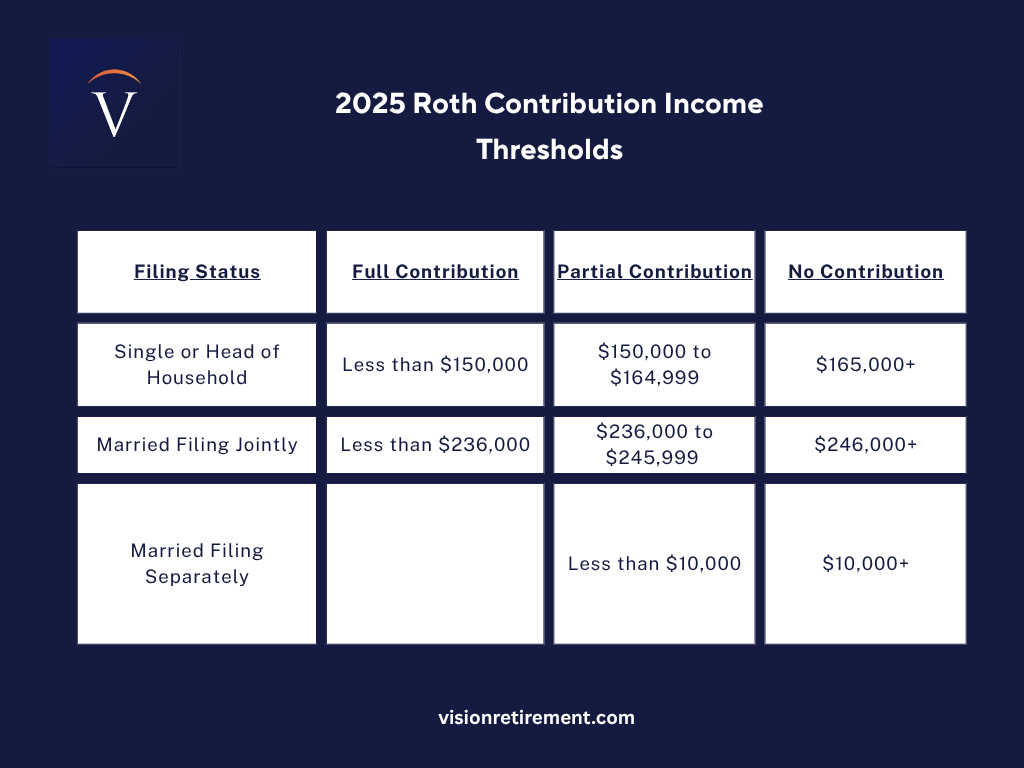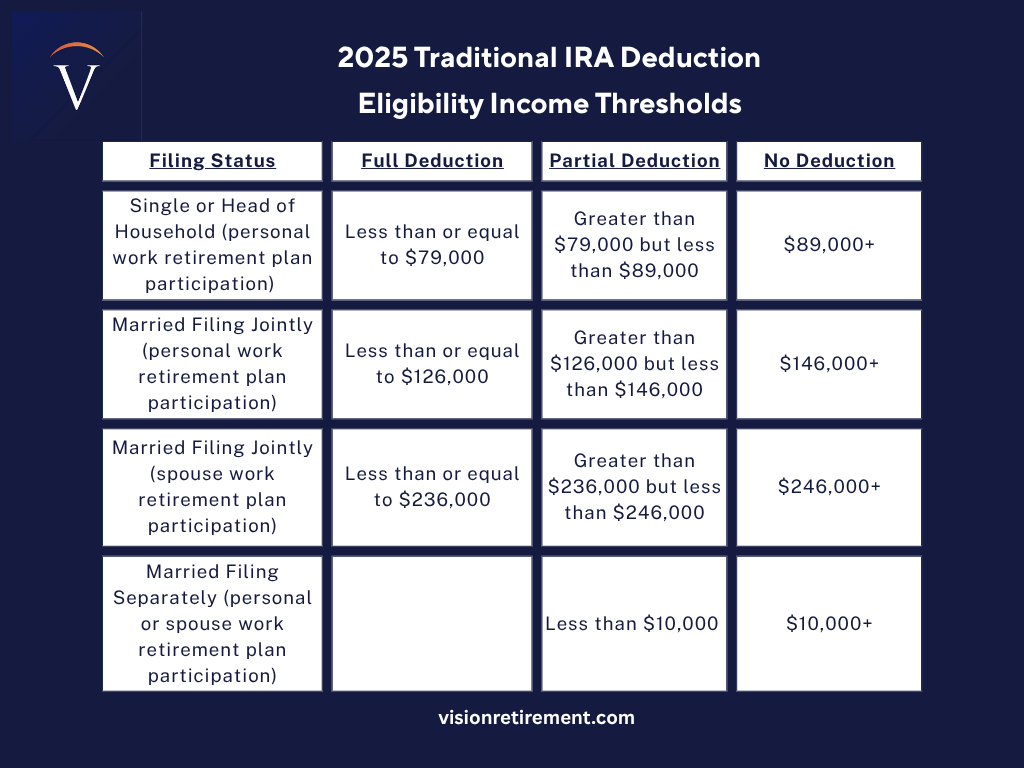Roth vs. Traditional IRA: How to Choose
From 401(k) plans to annuities, there is no shortage of ways to help people save for retirement. Yet, individual retirement accounts (IRAs) shine through as one of the most versatile vehicles for this very purpose. We’ll explore why in this article.
What is an individual retirement account (IRA)?
An IRA is a financial account specifically designed to help fund your retirement while providing various tax benefits. After opening an IRA, you can invest in a wide range of assets including stocks, bonds, exchange-traded funds (ETFs), and mutual funds. While several types of IRAs exist, traditional and Roth IRAs are the two most common choices.
Roth vs. traditional IRA: key differences
A traditional IRA is a tax-deferred account, with taxes paid at a later date. Account contributions are typically made with pre-tax dollars, allowing earnings to grow tax-deferred until they’re withdrawed during retirement. A Roth IRA, on the other hand, is funded with after-tax money. Roth IRA funds can grow tax-free with no taxes owed on withdrawals during retirement, provided the account has been open for at least five years—a requirement known as the “five-year rule.”
Why should you invest in an IRA?
While there are several compelling reasons to invest in an IRA, the most notable is the aforementioned tax benefits. Since retirement is expensive, relying solely on an employer-sponsored plan (e.g., a 401(k)) may not sufficiently cover future retirement expenses. An IRA also provides access to a broader range of investment options than employer-sponsored plans as well as greater flexibility, giving you complete control over your account (whereas an employer can change 401(k) plans or limit investment choices without your consent). Finally, you may need to move your 401(k) funds entirely or roll them into an IRA if you eventually change jobs.
Roth vs. traditional IRA: how to choose
When choosing between different types of IRAs, a one-size-fits-all approach rarely works. One common reason investors opt for a traditional IRA rather than a Roth IRA is the assumption they’ll occupy a lower income tax bracket during retirement, believing this will allow them to benefit from tax-deferral with withdrawals taxed at a lower rate. While it’s natural to think your gross income will decrease during retirement, your taxable income won’t necessarily decline as well—especially true given various income sources such as Social Security benefits, any freelance or part-time work, and other investments you may have.
As predicting your future income with any sort of certainty is challenging, investing in both a traditional and Roth IRA is often a wise strategy as an approach offering tax diversification (meaning some assets are taxed upon withdrawal while others remain tax-free). Nevertheless, be sure to keep in mind other important factors when making your choice such as eligibility requirements, contribution limits, and RMDs—all of which we’ll discuss next.
2025 IRA contribution limits
As with many retirement accounts, you’ll need to adhere to several IRA “rules.” One such example? Contribution limits, meaning you can’t just add any amount of money you wish to the account.
The 2025 maximum annual contribution limit for both traditional and Roth IRAs for those under age 50 is $7,000 (limits do change annually). Those older than this can contribute up to $8,000, with the extra $1,000 known as a “catch-up” contribution offered by the IRS to encourage savings and help ease the financial burden of retirement—especially for those who didn’t save enough when they were younger.
These limits apply to the total amount contributed to all IRAs combined (rather than each account individually), with contributions unable to surpass one’s taxable income for the year; if you earn $6,000 in 2025, for example, that's the maximum amount you can contribute to all IRA accounts. As you can continue to make contributions for the previous year up until the income tax deadline, it’s possible to do for 2025 (in any amount, up to the limit) until April 15, 2026.
IRA eligibility requirements
You can open and contribute to a traditional IRA at any age with income as a non-factor (whereas contributions ceased during the year you turned 70½ prior to the Secure Act 2.0). Roth IRAs, meanwhile, have different rules that may limit or even block eligibility to contribute based on earnings. For example, single tax filers with a 2025 modified adjusted gross income (MAGI) of $165,000+ aren’t eligible to contribute to a Roth IRA—with a MAGI limit of $246,000 for joint filers.
If you earn above these thresholds but still wish to contribute to a Roth IRA, you can consider a backdoor IRA established through various methods that require converting a portion (or all) of traditional IRA funds to a Roth IRA.
IRA tax deduction limits
Traditional IRAs are typically funded with pre-tax dollars but also give you the option to contribute after-tax dollars and then claim a deduction on your tax return. Should you opt for this approach, it's important to understand the IRS imposes income restrictions depending on your earnings and whether you or your spouse participate in other qualified retirement plans (e.g., a 401(k)).
While those who don’t participate in a retirement plan at work can deduct their full IRA contribution regardless of income, those who do see a limited ability to deduct IRA contributions based on filing status and modified adjusted gross income (MAGI). Single filers with a MAGI of $79,000 or less in 2025 who participate in a work retirement plan, for example, can deduct their entire traditional IRA contribution (with a MAGI limit of $146,000 for joint filers seeking a full tax deduction). You may also qualify for partial deductions:
IRA RMDs
A traditional IRA is a tax-deferred account, meaning you’ll eventually need to pay taxes on your assets. This is where required minimum distributions (RMDs) come into play, meaning the minimum amounts you must withdraw from your IRA beginning at age 73. If you turn(ed) 73 on or after January 1, 2025, you must take your first RMD by December 31, 2026; should you choose to exercise your one-time option to delay RMDs, your first distribution will be due by April 1, 2027 (with annual withdrawals then required by December 31 of each subsequent year). Roth IRAs aren’t subject to RMDs as you’ve already paid taxes on your contributions.
IRA early withdrawal penalties
Roth IRAs allow you to withdraw sums equivalent to the amount contributed at any time and for any reason, tax-free and without penalty even before the age of 59½. Nevertheless, those younger than this age who want to withdraw from the earnings or profit portion of their account will likely incur a 10% early withdrawal penalty and need to pay taxes on the withdrawal. Those who make an early withdrawal (prior to age 59½) from a traditional IRA, meanwhile, will both pay income tax on that amount and incur a 10% penalty on the same. As with Roth IRAs, exceptions do exist.
Roth vs. traditional IRAs: which is better for you?
While choosing between a traditional and Roth IRA depends on your own specific situation, it’s not uncommon for investor portfolios to contain both options.
Still unsure about which IRA is right for you? Schedule a FREE discovery call with one of our CFP® professionals who can help.
People also ask
-
The Roth IRA 5-year rule—which essentially states when you’re allowed to make Roth IRA withdrawals without the burden of penalties or taxes—dictates you can’t withdraw from the earnings portion of an IRA unless at least five years have passed since your initial contribution to the account.
-
You can open either type of IRA—most likely taking shape as an IRA certificate of deposit (CD)—at almost any bank, credit union, or other financial institution as a good option for those looking to minimize risk and guarantee a return. You can also do so through your financial advisor or online brokerage, thus enjoying the ability to cherry-pick your investments and potentially reap higher returns (albeit with more risk).
-
Yes, you can indeed contribute to both. Just keep in mind the maximum annual contribution limit for all IRAs in totality is $7,000 for 2025 ($8,000 for those aged 50+).
---
Vision Retirement is an independent registered advisor (RIA) firm headquartered in Ridgewood, New Jersey. Launched in 2006 to better help people prepare for retirement and feel more confident in their decision-making, our firm’s mission is to provide clients with clarity and guidance so they can enjoy a comfortable and stress-free retirement. Schedule a no-obligation consultation with one of our financial advisors today!
Disclosures:
The opinions voiced in this material are for general information only and are not intended to provide specific advice or recommendations for any individual.






